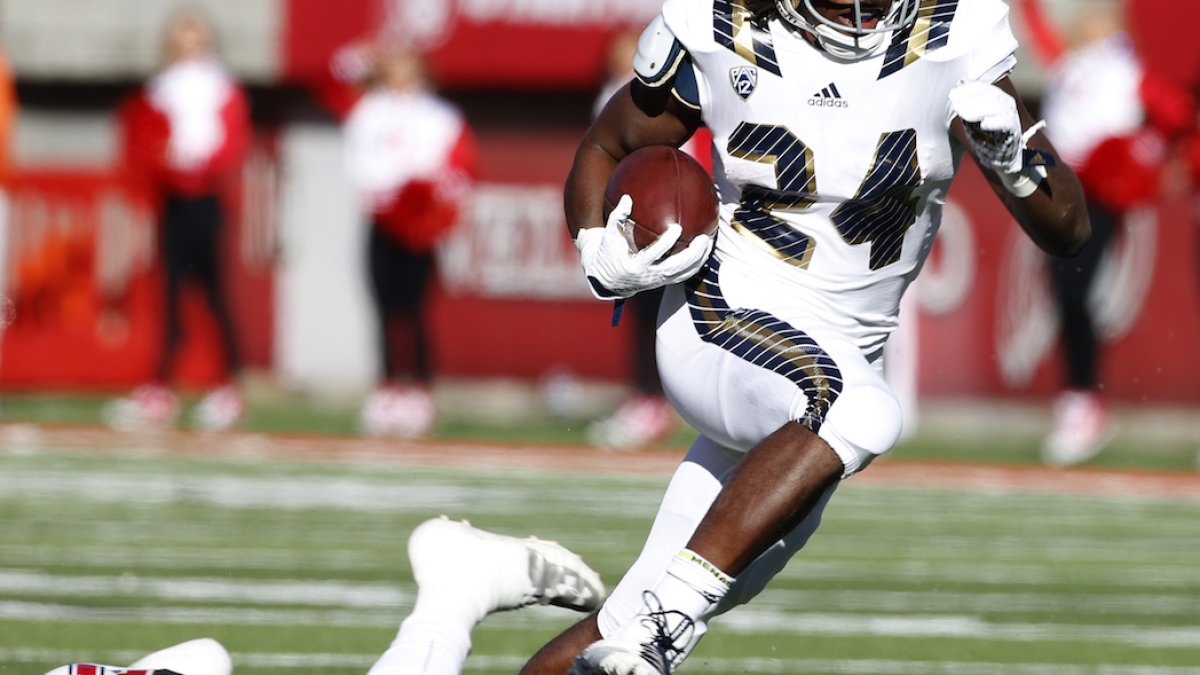Running back wasn’t a pressing need for the New York Giants heading into the offseason, but it was a position that we thought could be upgraded. The team seemed to agree, adding veteran Bobby Rainey, fifth-round draft pick Paul Perkins, and undrafted free agent Marshaun Coprich to bring the number of running backs on the roster to seven.
Of the returning players, Rashad Jennings looks to be the best returning runner from last year, while Shane Vereen figures to continue to be heavily involved in the passing game. Jennings posted career-highs in most statistical categories last season, in addition to earning his best overall and rush grades of his seven-year career. However, he turned 31 in March, has missed time due to injury in previous seasons, and has played more than half of his team’s offensive snaps in a season just once. 2015 was also just his second year with an above-average run grade. Vereen has been a valuable player in the passing game over his career, but he has never finished a season with an above-average rush grade and is best suited as a situational back.
New York’s fourth-round draft pick from 2014, Andre Williams, has been a disappointment thus far. He’s earned negative overall grades in each of his two years and has barely averaged two yards after contact in his pro career. His playing time dropped down to 159 snaps last year — just 14 percent of the Giants’ offensive plays. So while the position is far from a wide open race, the door has been left open for another player to command significant playing time if one proves to be better.
Former UCLA Bruin Paul Perkins dropped all the way to the fifth round in the draft as the running back position continues to be devalued, but we at PFF had a late-second-round draft grade on him as the third-best running back in the class. As a junior in 2015, Perkins led the draft class in both rushing grade and elusive rating, which is PFF's measure of how productive a back is independent of his blocking.
Some have said Perkins cannot be very successful as an inside runner or without a good offensive line due to his 5-foot-10, 208-pound frame, but his tape from 2015 shows a different story. He works well in small spaces and can consistently make defenders miss in the hole. Perkins averaged 3.6 yards after contact, tied for second-best in the draft class. He forced 73 missed tackles as a runner, second to only Heisman winner Derrick Henry of Alabama, who needed an extra 160 carries to get to 76.
UCLA’s offensive line was a mediocre run-blocking group at best, with half of their top six offensive linemen grading negatively. Perkins often had to avoid and beat defenders in the backfield, and already proved to deal with it better than almost all college running backs. He was contacted behind the line of scrimmage on over a quarter of his carries, one of the highest rates in the nation, and still averaged 3.5 yards after contact on those 61 runs. Perkins is fairly unproven as a receiver and was a below-average pass blocker, but with Vereen handling those duties, Perkins could focus primarily on running the ball as a rookie. Even if the Giants’ offensive line doesn’t improve upon its 16th-ranked run blocking in 2015, Perkins might be the best-suited to succeed behind an average line.


 © 2025 PFF - all rights reserved.
© 2025 PFF - all rights reserved.